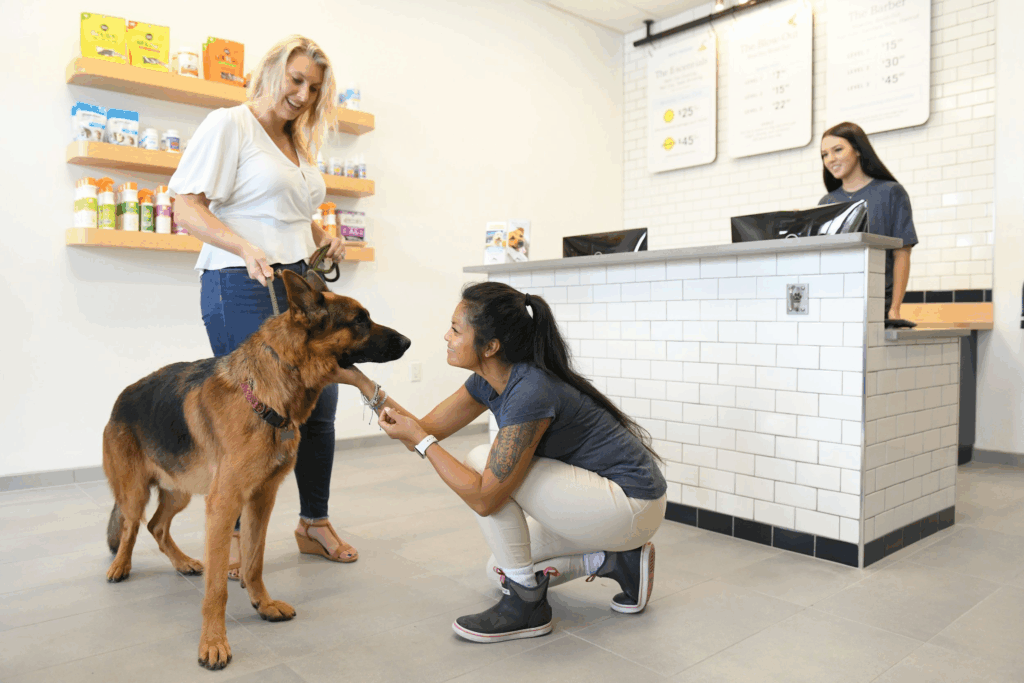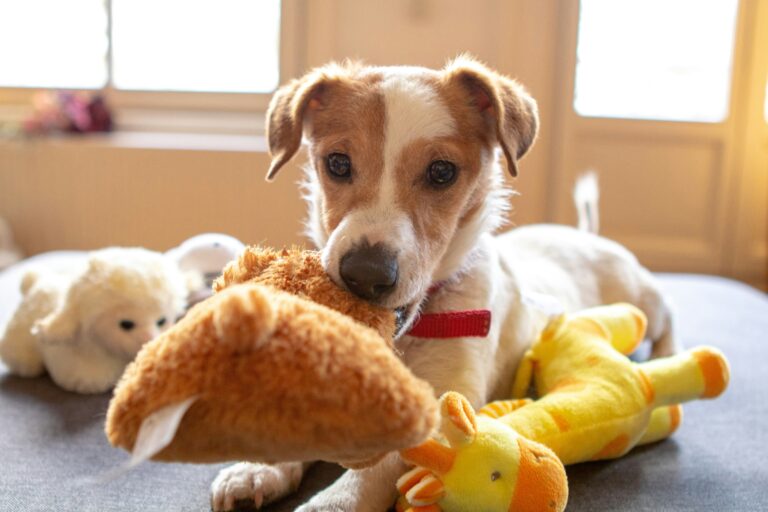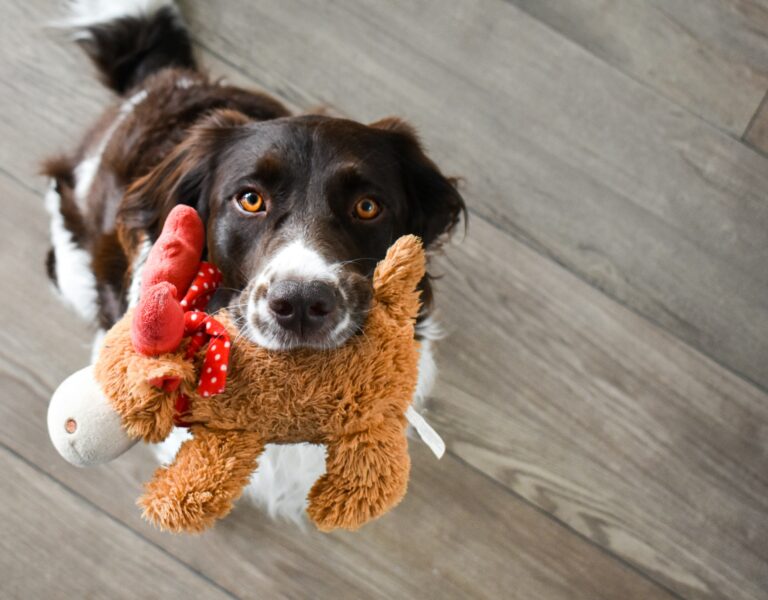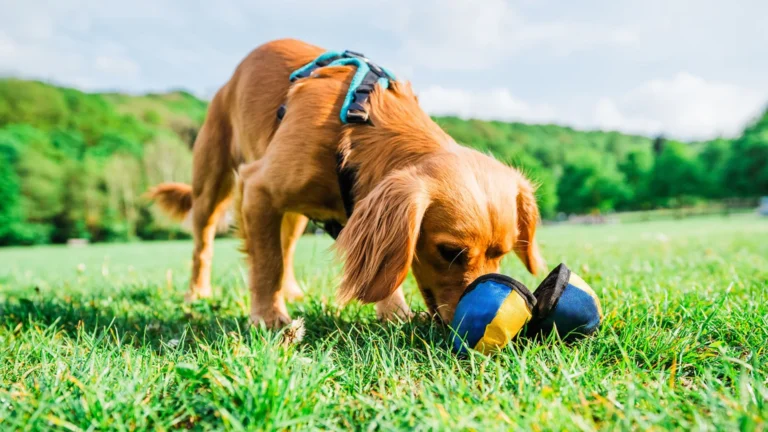Do you have a small furry friend at home who lights up at the sight of a new toy? Are you a doting pet parent always on the hunt for interesting, stimulating, and safe playthings for your little canine? If you’ve nodded along to these questions, “Pawsitively Perfect: Safely Introducing New Toys to Your Small Dog” is a must-read.

In this informational piece, we explore the exciting world of toys from the perspective of small dogs. Engaging, colorful, and fun – they’re more than just objects. They are a source of entertainment, mental stimulation, and an effective tool for strengthening your bond with your pet. However, not all toys are made the same, and some might even pose a risk to your furry friend. How can you make the right choice?
Delving into the important aspects of safety, material choice, and size, we help you navigate the complex and often overwhelming pet toy market. More importantly, we discuss effective techniques to introduce new toys to your small dog. The first encounter can set the tone for your pet’s relationship with the toy, and getting it right is crucial.
Wrapping up with tips on observing your pet’s interaction with new toys, this insightful guide aims to equip pet parents with the knowledge they need. So, whether you’re a new pet parent or a seasoned one looking to enrich your small dog’s playtime, stay tuned for a detailed discussion on safely introducing new toys to your small dog.
Encouraging Interactive Play
Interactive toys serve as excellent tools for mental stimulation. Dogs, especially small breeds, benefit greatly from challenges that engage their minds. Toys that dispense treats or require problem-solving help prevent boredom and reduce the risk of destructive behaviors. Interactive play can also strengthen the bond between owner and dog. By engaging together with puzzle toys or games like fetch, you not only exercise your pet physically but also foster a deeper sense of trust and companionship. Choose toys that match your dog’s cognitive level and slowly introduce more complex versions as their skills improve.
Rotating Toys for Sustained Interest
Just like humans, dogs can become bored if they interact with the same toy every day. One effective method to maintain interest and excitement is toy rotation. Keep a small collection of different toys and change them out every few days. This prevents overstimulation with a single toy and reintroduces a sense of novelty. Rotating also allows you to inspect and clean toys in between uses, ensuring safety and hygiene. Toys stored away for a week or two often feel “new” to your pet upon reintroduction, which helps to rekindle their enthusiasm.
Toys for Dental Health
Dental toys serve a dual function by entertaining your dog while promoting oral hygiene. Look for toys designed with grooves, nubs, or bristles that help remove plaque and massage gums during play. Regular use can reduce the need for frequent professional dental cleanings. Always verify that dental toys are soft enough not to damage teeth, especially in smaller dogs who may be more prone to sensitivity. Offering a mix of soft chew and textured toys ensures your dog receives varied oral stimulation while having fun.
Age-Appropriate Toy Selection
Puppies, adults, and senior dogs have vastly different needs when it comes to toys. For example, puppies may benefit from softer toys that soothe sore gums during teething, while adult dogs require tougher toys that withstand high energy. Senior dogs might need lightweight or plush toys that are easier to chew and carry due to dental wear or joint issues. Adjust your selection based on life stage, and regularly reassess your dog’s preferences and capabilities as they grow. Observing how your dog engages with toys will help guide these adjustments effectively.

Safety Checks and Maintenance
Routine maintenance of dog toys is essential. No matter how durable a toy is marketed to be, wear and tear are inevitable. Conduct a thorough inspection of all your dog’s toys at least once a week. Discard any toys that show signs of damage such as tears, sharp edges, or detached parts. Wash fabric and rubber toys regularly with pet-safe detergents to prevent the buildup of dirt and bacteria. Proper maintenance not only extends the life of the toy but also ensures that your dog remains safe while playing.
Understanding Play Behavior
Every dog has a unique play style. Some enjoy chasing and retrieving, others prefer tugging, and some simply love to chew. Observing your dog’s behavior helps determine what type of toys they might enjoy the most. Dogs who shake toys aggressively may benefit from plush toys with reinforced stitching, while chewers require dense, durable rubber items. Dogs that enjoy interaction may gravitate towards toys that encourage human participation. Tailoring toys to suit your dog’s behavior ensures maximum satisfaction and reduces the risk of disinterest.
Integrating Toys into Training Routines
Toys are not just recreational; they are effective tools for training. Using toys as rewards can be especially motivating for food-driven or play-driven dogs. For instance, offering a quick tug session after a successful “stay” command reinforces positive behavior. Training toys can also include clicker-compatible puzzle games that reward dogs for completing tasks. This dual-purpose use of toys builds structure into your dog’s playtime and reinforces desired behaviors. Remember to keep sessions short and positive to maintain your dog’s interest.
Avoiding Common Toy Mistakes
Many pet owners unknowingly make mistakes when selecting or using toys. One of the most common errors is choosing a toy based solely on appearance or price rather than suitability. A cute design might be appealing to humans, but function and safety should take priority. Another mistake is not considering the toy’s size relative to the dog’s mouth, which can lead to choking hazards. Lastly, over-reliance on a single toy can lead to fixation or boredom. Diversifying your toy selection and staying attentive to your dog’s interaction with each toy can prevent these pitfalls.
The Role of Scent and Texture
Dogs experience the world primarily through scent and touch. Toys that incorporate different textures or are infused with dog-safe scents can significantly enhance playtime. Some toys are designed with multiple surfaces, including ridges, rubber spikes, and soft zones, to provide varied tactile feedback. Others come scented with vanilla, mint, or bacon flavors to keep your dog engaged. Using scented toys can also help encourage dogs who are less enthusiastic about play or those experiencing stress, providing them with comfort through familiar smells.
Tailoring Toys to Your Dog’s Energy Level
Understanding your dog’s energy level is critical when selecting toys. High-energy dogs may need fetch toys, frisbees, or interactive launchers that allow them to burn off excess energy. Low-energy dogs may prefer plush squeaky toys they can carry and cuddle. Matching the toy’s function to your dog’s natural activity levels ensures they remain mentally and physically satisfied. An under-stimulated dog may become destructive or anxious, while an over-stimulated one may struggle to settle. Use toys to bring balance, not overstimulation, to their daily routine.
Toy Rotation Strategy
To keep the dog’s interest in the toys, consider a toy rotation strategy. This is similar to the concept of load balancing in IT, where workloads are distributed to improve system efficiency and prevent overload. Similarly, rotating toys prevent your dog from getting bored and reduces the wear and tear of the toys.
Creating a Toy Schedule
In the context of creating a toy schedule, it’s important to consider how dogs perceive consistency and variety. Regularly adjusting their play environment introduces novelty without overwhelming them. A structured rotation helps maintain interest in toys that might otherwise become mundane. Rather than offering all toys at once, introduce one or two, monitor your dog’s engagement, and switch them out every few days. This keeps each play session fresh while also allowing you to monitor wear and tear.
By observing your pet’s reaction, you can gauge what elements of the toy—texture, sound, interactivity—spark interest. A journal of toy use and preferences can serve as a useful reference, particularly if you want to tailor future purchases to match your dog’s preferences. In this way, a toy schedule mimics task prioritization in project management, where resources are allocated based on observed effectiveness.
Understanding Your Dog’s Preference
Understanding your dog’s toy preference is much like user interface testing in software—it’s trial, observation, and refinement. Some dogs are captivated by high-pitched squeakers, while others find comfort in plush toys or tactile stimulation through textured surfaces. Not all dogs respond the same way to stimulation, so the key lies in watching how they naturally interact with various materials, shapes, and functions.
Take note of whether your dog engages with toys through chewing, pawing, tossing, or simply cuddling. These clues can help you refine your purchases and avoid wasting money on items that will collect dust. The most important thing is that your dog finds joy, comfort, or stimulation in the toy. If a toy goes ignored, it’s not a failure—it’s a data point that helps you understand your pet better.
Observing and Adapting
Observation is at the heart of successful pet care. As your dog grows or changes behaviorally, their interaction with toys may evolve. Puppies go through teething phases that require softer chew options, while adult dogs may favor more durable, textured toys that challenge their jaw strength and dexterity. Older dogs, on the other hand, might need plush or lightly resistant toys that do not aggravate dental or joint issues.
Adapt your toy collection to reflect these changes. If a toy that was once a favorite begins to gather dust, it may be time to retire it or reintroduce it later. Rotate it out and replace it with something new to reignite interest. Just as a programmer adjusts code to suit new user needs, you must remain responsive to your dog’s shifting preferences and developmental stages.
The Role of Toy Rotation in Enrichment
Toy rotation plays a central role in cognitive enrichment. Dogs, much like humans, thrive on novelty and challenge. Constant access to the same set of toys can lead to disinterest and even behavioral issues stemming from boredom. By rotating toys weekly or biweekly, you keep your dog curious and excited about their play environment.
The anticipation of “new” toys can spark investigative behavior, which exercises your dog’s brain. You can take it a step further by hiding toys in different areas or integrating them into puzzles or treat-dispensing challenges. The goal is to simulate a dynamic environment where your dog must engage with the toy, not just chew it passively.
Balancing Stimulation and Rest
While active play is crucial, equally important is the opportunity for rest and recovery. Dogs, especially small breeds, may tire quickly. A good toy rotation plan takes into account not only physical engagement but also periods of calm. Alternate high-energy tug or fetch toys with comfort items like plush toys or puzzle feeders that require thought more than motion.
Creating a balance mirrors the concept of active vs. passive states in technology systems. Not everything needs to run at full capacity all the time. Providing time and space for your dog to wind down contributes to emotional regulation and reduces overstimulation.
The Psychological Impact of Routine on Dogs
Dogs are creatures of habit, and the predictability of a toy schedule can provide a comforting structure. Introducing toys at set times during the day can help manage behavior and improve obedience. For example, you might designate puzzle toys for morning mental stimulation and offer a tug toy in the evening as a bonding activity.
This form of structured engagement offers multiple benefits. It can reduce anxiety, especially in dogs prone to separation issues, by giving them something to look forward to. Establishing a rhythm to the day through play also encourages more predictable sleep and feeding patterns, contributing to your dog’s overall well-being.
Incorporating Toys into Training
Toys can be excellent tools for positive reinforcement. For dogs that are more toy-motivated than treat-motivated, integrating their favorite toy into a training session can increase focus and enthusiasm. A squeaky toy used as a reward for successful recall or sit-stay commands builds a powerful association between obedience and pleasure.
You can also use toys to teach cues like “drop it,” “take it,” or “find it.” These commands enhance communication and give your dog cognitive tasks that challenge their attention and memory. Just like teaching shortcuts in a user interface improves workflow, these toy-based commands streamline play and strengthen your bond.
Using Feedback Loops for Toy Effectiveness
To get the most out of your investment in toys, consider setting up a feedback loop. Monitor your dog’s response to new toys and update your choices accordingly. This iterative process mirrors agile development methodologies where changes are tested, reviewed, and optimized in real-time.
If a particular type of toy consistently holds your dog’s attention or wears out faster than others, take note. This feedback not only helps you make smarter purchases but also ensures your dog’s toy box evolves with their needs and preferences.
When to Retire a Toy
No toy lasts forever. Even the most durable materials can fray, rip, or lose their appeal over time. Watch for loose stuffing, torn seams, or exposed parts like squeakers or beads. If a toy becomes a hazard, it’s time to remove it from rotation. You can also “archive” a toy—store it out of sight for a few weeks—and then reintroduce it later. This can make an old toy feel like new again without requiring a new purchase.
Knowing when to retire a toy is about safety and satisfaction. Your dog deserves a play environment that is both exciting and secure. Timely removal of damaged toys prevents accidents and keeps play sessions safe and enjoyable.
Maintaining Toy Hygiene and Safety
Cleanliness is critical, especially for small dogs that may have more sensitive digestive systems. Many toys are machine washable or dishwasher safe, but always refer to manufacturer guidelines. Rope toys can be soaked in a vinegar solution, while rubber toys can be scrubbed with pet-safe soap.
Store toys in a clean, dry bin, and separate worn or rarely used items for periodic deep cleaning. Ensuring that your dog’s toys are not harboring bacteria or mold reduces the risk of illness. A clean toy is not only healthier but often more appealing to your dog, ensuring consistent use and enjoyment.
Ensuring Regular Maintenance
Maintenance is a fundamental aspect of software engineering. The same way, regular maintenance of your pet’s toys is vital. This includes cleaning them regularly and checking for any signs of wear and tear.

Cleaning and Inspecting
In a software environment, regular inspections and updates ensure optimal performance. Likewise, toys should be cleaned regularly to remove any bacteria or dirt. Furthermore, they should be inspected for any signs of damage. If a toy is damaged, it should be replaced immediately to prevent any potential risks.
Conclusion
In conclusion, it’s evident that introducing new toys to your small dog can significantly enhance their playtime experience and stimulate their mental faculties. Yet, as “Pawsitively Perfect: Safely Introducing New Toys to Your Small Dog” advocates, it’s crucial to execute this introduction cautiously and considerately to ensure your pet’s safety.
It’s worth emphasizing that toys should not only be size-appropriate but also durable and free from harmful elements. Keep in mind, toys that are too small can pose choking hazards, while toxic materials can lead to health issues. Hence, always opt for toys explicitly designed for small dogs.
Moreover, introducing toys one at a time and monitoring your dog’s reaction is paramount to ascertain their safety and comfort. Always observe your pet’s interaction with the new toy, and if they show signs of distress or aggression, remove the toy immediately.
Ultimately, while toys can enrich your small dog’s life, their safety should never be compromised. By being vigilant and discerning when introducing new toys, you can ensure that your pet enjoys a safe, healthy, and delightful playtime. Remember, the joy of play is pawsitively perfect when done safely! 🐾🐶



